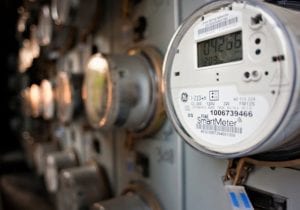The Victorian government is calling for industry input into how to best resolve future network voltage challenges, hoping to avoid imposing constraints and new “solar taxes” on households and businesses as the uptake of rooftop solar continues to grow.
Victorian energy minister Lily D’Ambrosio said the state government was kick-starting the consultation to ensure state regulators and distribution network operators understood the options available for managing grid voltages, while also supporting more households and businesses to make the switch to solar.
“As rooftop solar continues to boom in Victoria under our programs like Solar Homes and Solar Heating and Cooling, there is a growing need for distribution businesses to manage network voltage to support the decarbonisation and decentralisation of our energy system,” D’Ambrosio said.
“We know getting voltage management right is essential to protecting consumers from unnecessary solar export curtailment, power quality issues such as flickering lights and appliance malfunctions, increased energy consumption, and increased greenhouse gas emissions.”
In parts of the grid with high penetration of solar and other distributed energy resources – like batteries or electric vehicles – management of grid voltages can pose a challenge for distribution network operators, effecting the quality of electricity supplies to nearby consumers.
Higher penetrations of distributed energy resources sending excess power into a congested part of the network can lead to significant variations in grid voltages with flow-on impacts on the performance of inverters and other devices.
The response of some networks to grid voltage issues has been to limit the amount of solar capacity that can be installed or energy exported in parts of the grid, but many in the industry insist that there are other, smarter solutions.
“Previously electricity only flowed in one direction from large centralised generators to end consumers,” the consultation paper says.
“The significant uptake of rooftop solar means that solar households often export their excess electricity back to the grid, and as a result electricity now flows in two directions.
“High voltages in the distribution network are often attributed to the high penetration of rooftop solar exports in the middle of the day leading to an increase in voltage.”
The analysis of energy market experts has also suggested that grid voltage challenges may be a legacy problem the way networks have been managed, rather than something that is only caused by the growth of rooftop solar.
For example, director of Victoria Energy Policy Centre, professor Bruce Mountain, has questioned the extent to which limitations imposed on solar exports are justified by actual network constraints.
Through a consultation paper published on Wednesday, the Victorian government called for feedback on how to best manage these challenges without limiting the ability of households and businesses to install and export power from rooftop solar systems.
Victorian distribution network companies currently impose a 5kW per phase limit on the export of power from roof top solar installations to manage network congestion, with some parts of the grid subjected to even stricter limitations.
In an attempt to manage the “overcrowding” of solar installations in parts of the grid, amendments to the National Electricity Rules have also been introduced that allow electricity retailers to impose additional charges on households connecting rooftop solar systems to the electricity network.
The Victorian government opposed the introduction of these charges and is hopeful that by creating a long-term voltage management strategy, it can avoid imposing such burdens by supporting appropriate technical solutions and incentives.
“As rooftop solar penetration increases, there will be a growing need for distribution businesses to manage the impacts solar exports have on network voltage,” the consultation paper says.
“Additionally, as new kinds of DER become more prevalent including household batteries and EVs, voltage management will need to support these new devices. Batteries and EV charging, as well as demand response, present ideal opportunities to manage high voltage issues.
“To ensure these devices are used in a way that supports the network, incentives could be made available for customers and third parties to deliver network support.”
The Victorian government says it has very good visibility of voltages across the state’s grid by virtue of the high uptake of smart meters across households and businesses and was interested in stakeholder ideas about how to best manage voltages through combinations of technical, regulatory and incentive-based measures.
The Department of Environment, Land, Water and Planning will receive submissions on the proposed voltage management strategy until August and plans to publish a position paper in early 2023.
“Feedback from this consultation paper will help ensure Victoria manages our grid to maximise the benefits of continued growth of distributed energy resources, slashing our emissions, and reducing energy consumption for the benefit of all consumers,” D’Ambrosio said.









